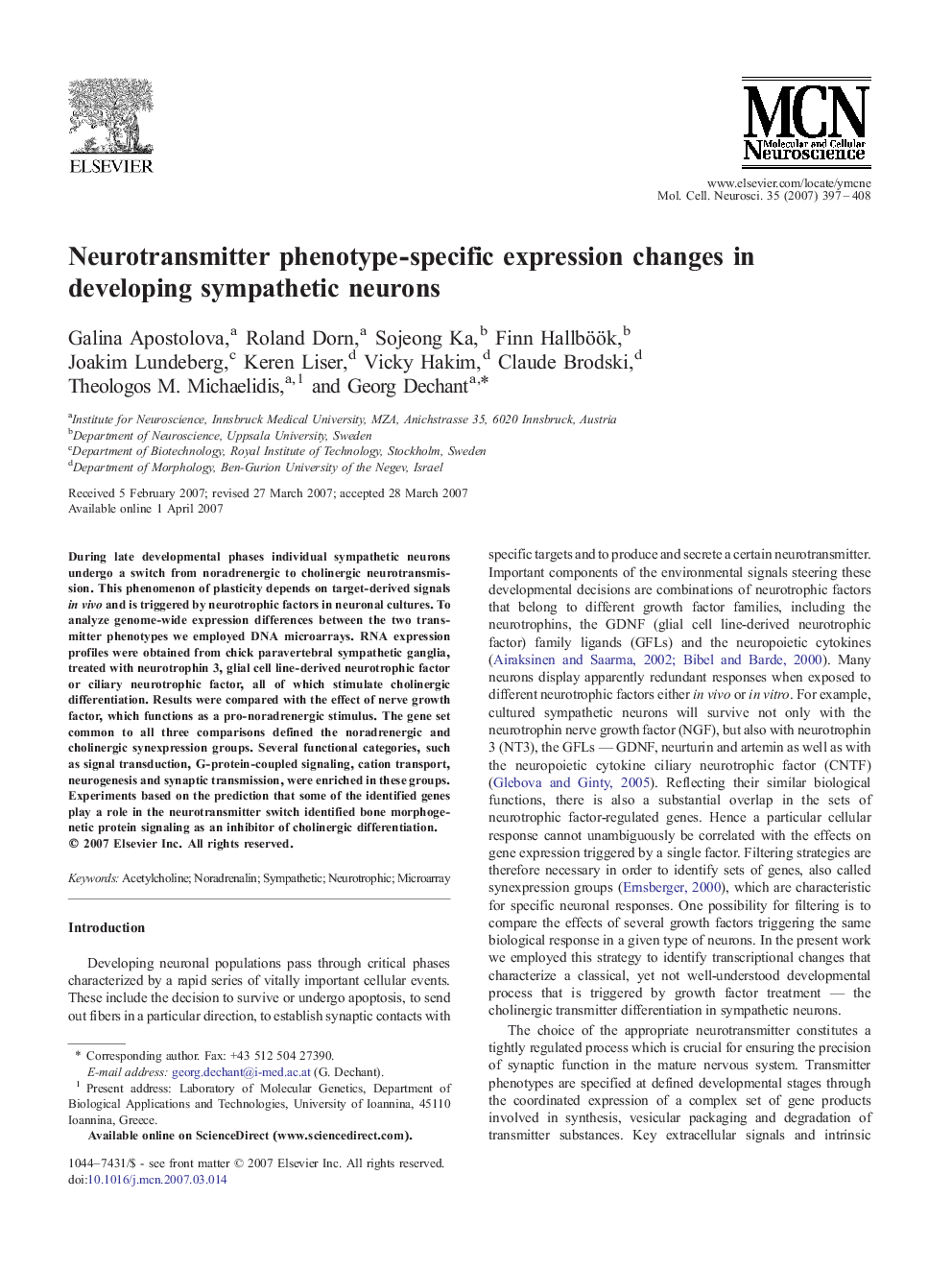| Article ID | Journal | Published Year | Pages | File Type |
|---|---|---|---|---|
| 2199069 | Molecular and Cellular Neuroscience | 2007 | 12 Pages |
During late developmental phases individual sympathetic neurons undergo a switch from noradrenergic to cholinergic neurotransmission. This phenomenon of plasticity depends on target-derived signals in vivo and is triggered by neurotrophic factors in neuronal cultures. To analyze genome-wide expression differences between the two transmitter phenotypes we employed DNA microarrays. RNA expression profiles were obtained from chick paravertebral sympathetic ganglia, treated with neurotrophin 3, glial cell line-derived neurotrophic factor or ciliary neurotrophic factor, all of which stimulate cholinergic differentiation. Results were compared with the effect of nerve growth factor, which functions as a pro-noradrenergic stimulus. The gene set common to all three comparisons defined the noradrenergic and cholinergic synexpression groups. Several functional categories, such as signal transduction, G-protein-coupled signaling, cation transport, neurogenesis and synaptic transmission, were enriched in these groups. Experiments based on the prediction that some of the identified genes play a role in the neurotransmitter switch identified bone morphogenetic protein signaling as an inhibitor of cholinergic differentiation.
